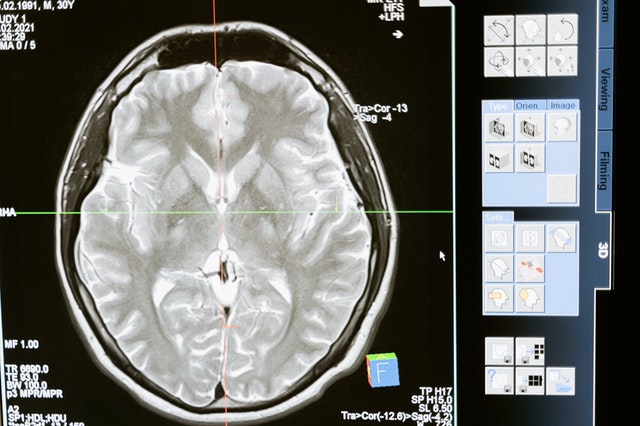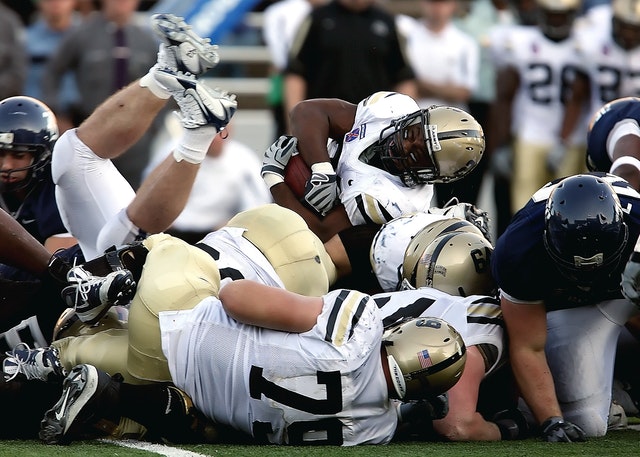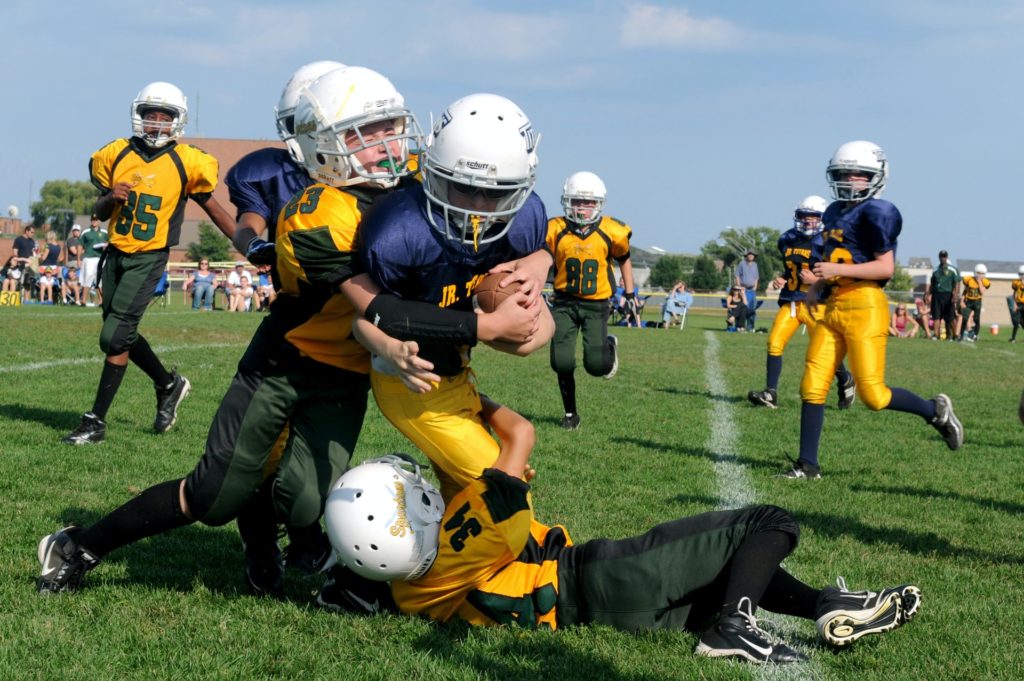Sports are an integral part of education, being a useful way to teach skills that are difficult to do in a classroom. Concepts like teamwork, resilience, and coordination are perfectly taught by sports which require students to work together with their peers, push themselves out of their comfort zone, and challenge them to coordinate not only their own movements, but their movements with others.
While sports have many benefits that can’t be obtained easily elsewhere, there is one type of sport that has been under scrutiny recently due to the measurable brain damage they cause, contact sports. The brain damage caused by contact sports is significant even for young players who only play a single season of the sport.
Contact sports are sports where students are intended to hit or run into one another regularly. While protective equipment is always mandated, there is significant research to show that despite this protection, even students who don’t get concussions will still receive significant brain damage even after just one season of the sport.
New Research on Brain Damage Caused by Contact Sports

While this isn’t the first study to connect brain damage with contact sports, recent research published in Neurology begins to elucidate the long term consequences such brain damage caused by contact sports has throughout the course of a person’s life. (Rosko, et al.)
The research was conducted on the brains of 75 individuals who had been involved in contact sports, with the majority (67) being football players. All of the participants had undergone brain scans a few years before their deaths and then donated their brains postmortem to help further research into brain injuries.
The data showed that the contact sports created lesions, or cuts in the brain’s white matter that connects neurons together and helps them fire more quickly and accurately. The more that the participant had participated in contact sports, the more lesions appeared in their scans, but on top of this these lesions also correlated with higher scores in dementia measures.
At death, 64% of the participants had been clinically diagnosed with dementia, and 71% had precursor conditions that often progress into dementia. The more contact sports the participant engaged in, the more likely they were to have dementia as measured in the brain, but also in measures gained from an interview with the participants’ loved ones.
More white matter lesions caused by contact sports led to higher scores in difficulty with daily tasks. So contact sports not only lead to clinical diagnoses of brain disease , but also to a more difficult life for those that participate in them in the long term.
Should Schools Allow Contact Sports that Cause Brain Damage?
While sports and other competitive activities are so important for many students’ development, there will inevitably be brain damage caused by contact sports. That brain damage might not show up immediately, but MRI results and cognitive testing show that it is present despite what might appear harmless on the surface. While this should not be used to demonize all sports, certain ones like football and boxing require children to repeatedly run into and hit one another which research shows causes brain damage, even with protective equipment.
Research from 2015 showed that even just one season of playing high school football led to worse cognitive scores when compared with controls who were not playing contact sports. (Abbas et al.) Football isn’t the only sport which can directly damage a student’s brain, however.
There is also research out this year on boxing which showed that participants who had boxed in their youth not only had higher scores for cognitive decline leading to Alzheimers, but this decline began on average five years before declines began in controls. (Gallacher et al.) This shows that the brain damage caused by contact sports not only will affect students in the short term, but also cause their brains to age more quickly in the long run.
Schools should absolutely have extracurricular and curricular activities where students push themselves physically but there are many sports, such as basketball, soccer, and tennis, that do this without directly requiring students to run into or hit each other directly.
Injury is always a risk with physical activities, but the types of injuries resulting from non contact sports like broken bones, cuts, and bruises heal over time and often don’t leave long term damage. With contact sports, the damage immediately begins affecting students’ ability to learn and in the long term will lead to more severe and earlier onset of cognitive decline.

There are often attempts to find ways to make certain sports non-contact like with flag football, but research shows that it isn’t just the big tackle hits that quarterbacks incur which can cause functionally measurable damage in high schoolers. Repeated small blows like those incurred when defenders bash together, while not creating measurable damage after one blow, cause microdamage in the brain that makes each successive hit more damaging. (Talavage, et al.)
This small damage can not only slowly build up and cause cognitive decline as discussed in the studies above, but also puts students more at risk if they do eventually get a concussion as it will be more severe and result in more brain damage.
Schools need to take an approach similar to the medical field where they adopt a policy of “do no harm”. Activities which actively damage students brains, limit their ability to learn, and lead to long term permanent damage have no place at schools meant to set people up for success in life. Much of the research around football and other contact sports focuses on professionals and the increased risk of suicide and dementia, but schools need to look at the research on the topic in their context and consider how they can still support the physical development and teambuilding of the students in their school in ways that don’t require them to brain damage one another.
Want more like this? Make Lab to Class a part of your weekly professional development schedule by subscribing to updates below.
References
Abbas, Kausar, et al. “Alteration of Default Mode Network in High School Football Athletes Due to Repetitive Subconcussive Mild Traumatic Brain Injury: A Resting-State Functional Magnetic Resonance Imaging Study.” Brain Connectivity, vol. 5, no. 2, 2015, pp. 91–101., https://doi.org/10.1089/brain.2014.0279.
Gallacher, John, et al. “Amateur Boxing and Dementia.” Clinical Journal of Sport Medicine, Publish Ahead of Print, 2021, https://doi.org/10.1097/jsm.0000000000000976.
Rosko, Mary Alice. “Study Finds Brain Lesions on MRI Linked to Years of Playing Football.” Neuroscience News, 26 Nov. 2021, https://neurosciencenews.com/football-concussion-neurology-19705/.
Talavage, Thomas M., et al. “Functionally-Detected Cognitive Impairment in High School Football Players without Clinically-Diagnosed Concussion.” Journal of Neurotrauma, vol. 31, no. 4, 2014, pp. 327–338., https://doi.org/10.1089/neu.2010.1512.



